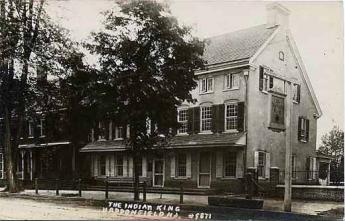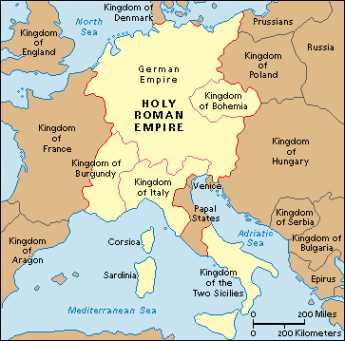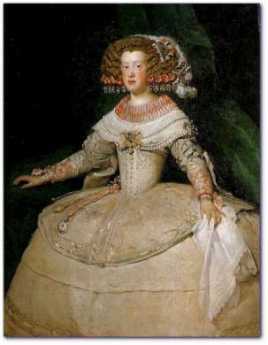Related Topics
Haddonfield (all 26)(1 of1)volume 38
 Haddonfield is a bit of a secret. It's Philadelphia's "Main Line, East"
Haddonfield is a bit of a secret. It's Philadelphia's "Main Line, East"
Quakers: All Alike, All Different
Quaker doctrines emerge from the stories they tell about each other.
The Empire Visits Haddonfield, Briefly

|
| The Holy Roman Empire |
When William Penn extended an invitation to all religions to come to a place of religious freedom, he really meant it. All religions were welcomed and tolerated, but the English government was deathly fearful of French Catholics in Canada, and Spanish Catholics in Florida. The Stuart kings were Catholic, sort of, but the important issue was protecting colonial real estate more than protecting doctrinal purity. When they picked up immigrants at European ports, the ships had to make a stop in England, and any Catholics aboard were removed.
So one very large and important cultural group never had much influence in America, particularly in Philadelphia. The Holy Roman Empire, that large loyally powerful European Catholic group in central Europe and southern Germany, just never got here in any great number. Americans eventually came to hear there was an important culture of some sort centered in Vienna, full of fat jolly folks who danced waltzes, but these apparitions were seldom seen in person and were never much thought about. The steel mills of western Pennsylvania drew in large numbers of Hungarians, and they told of Vienna's rival capital in Budapest, but that rivalry was apparently like Penn and Cornell or maybe Harvard and Yale, and what difference. Occasional visitors from those regions would grow strangely hostile upon encountering this indifference to what seemed pretty important back home. But one must remember to be more polite when around guests, that's all.
It took the Second World War and its attendant cultural struggles to bring a real wave of immigrants to America from Vienna. And these people were neither poor nor uneducated. They quickly moved into the classical music world and assumed roles that were not only important but culturally more advanced than we were accustomed to. They entered the universities and quickly rose to the academic peaks. Many of them could out-sing, out-dance, out-conversationalize any little group of provincial folk who happened to encounter them. Their names began to appear in the social pages, marrying debutantes. To a large degree, this singular immigration movement came to an end when the Cold War did. And that's rather a pity; we could really use more people like that.

|
| Marie Therese, Austrian Queen of Louis XIV |
One unusual exile from that movement lived for a long time next to the Haddonfield Quaker Meeting, or at least just down a little wooded lane to the rear. The occupant of that house was John Waite, a Quaker who really looked like a Quaker.
Originally published: Friday, June 23, 2006; most-recently modified: Friday, May 24, 2019
| Posted by: Commenter | Oct 1, 2008 11:20 AM |